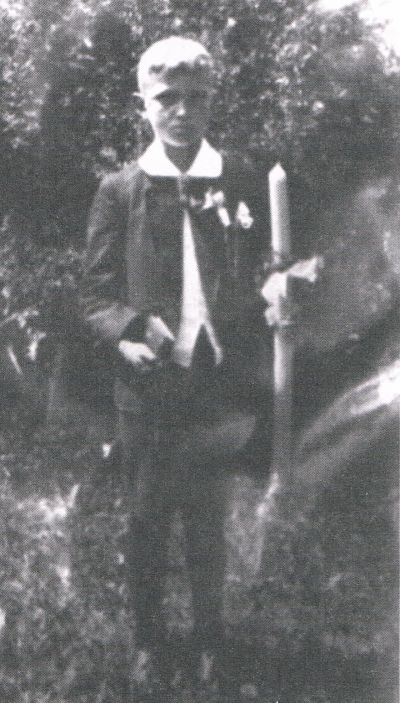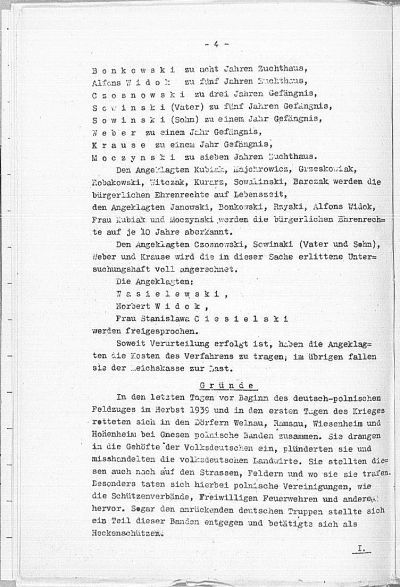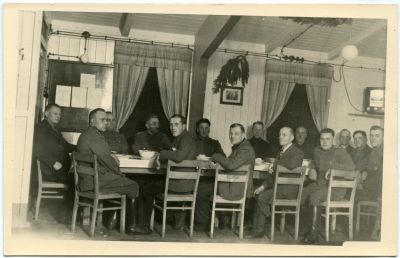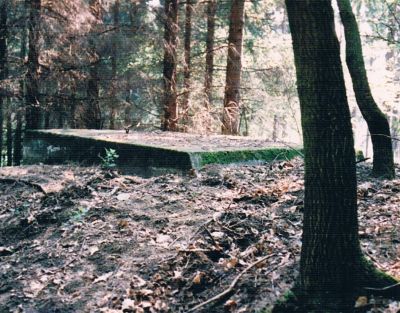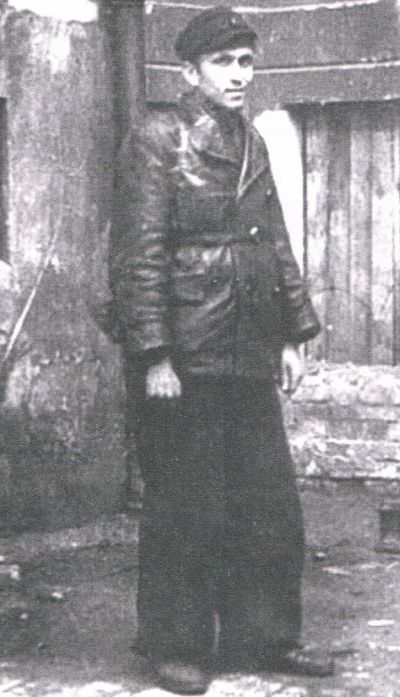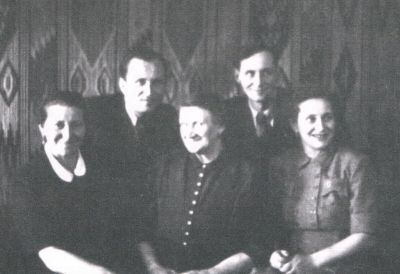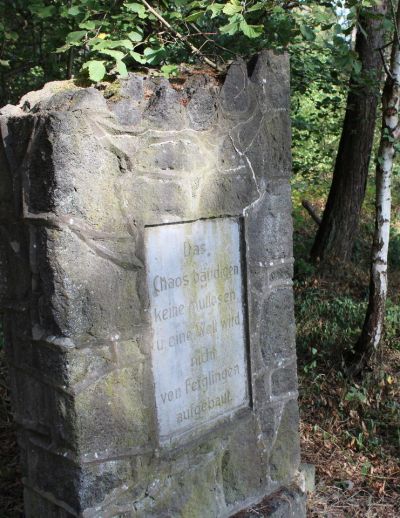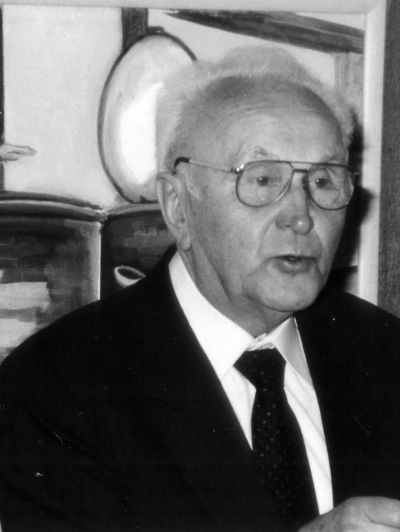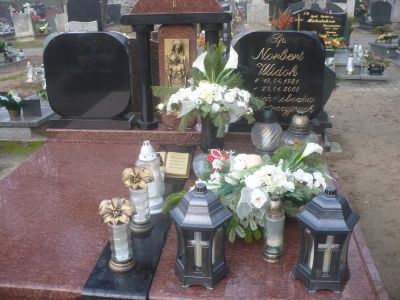Polish forced labourers on the “Reichsautobahn” in the Rhine region. The ordeal faced by Norbert Widok.
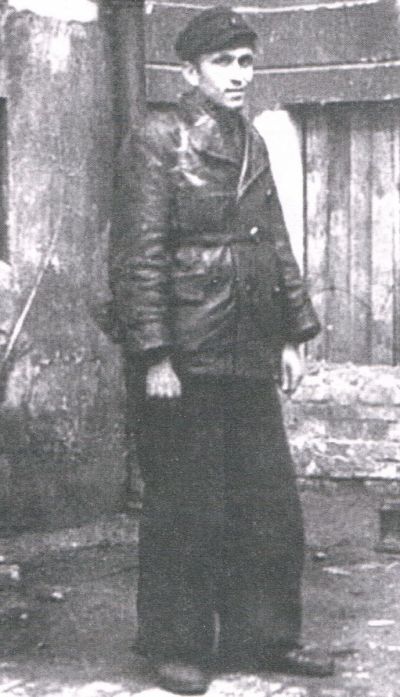
The “Reichsautobahn” from Koblenz to Trier
On 13 February 1939, the “Regulation on the safeguarding of the workforce requirements for tasks of particular importance to national policy” came into force. The Chief Construction Manager of the Reichsautobahnen (OBR), Frankfurt/Main Section, was given the financial means necessary to begin construction of a motorway from the Koblenz region (Dernbacher Dreieck) via Trier towards Kaiserslautern, which is known today as the A48/A1/A62. The Nazis ordered a total of 50 labour camps to be constructed. Until the start of 1942, Polish and French prisoners of war, foreign civilian labourers, concentration camp prisoners from Hinzert near Trier and around 3,000 domestic and foreign prisoners were interned alongside German conscripts. They were under the control of the prisons in Koblenz and Wittlich. Polish prisoners were predominantly put to work in the Autobahn construction section around Koblenz and were interned in the prison camps near Bassenheim, Hilgert and Uersfeld.
Polish prisoners on the Autobahn
A letter from the Reich’s Ministry of Justice to the “Administration of the General Government in Kraków” dated 22 November 1940 stated, “since the prisons in the General Government [are] over capacity”, 600 “Polish prisoners who are capable of working outside” with more than six months remaining on their sentence should be sent to the Autobahn. Appropriate requests were also sent to the “Reichsgau Wartheland” [Wartheland administrative area]. In December, the construction authority in Frankfurt am Main appealed for Polish prisoners to be transferred as soon as possible. This had the desired effect. On 10 January 1941, the police radio service announced that 400 Poles would be arriving at the railway station in Bassenheim, a few kilometres from Koblenz, the day after next. These prisoners were mainly from the “Reichsgau Warteland”. One of them was Norbert Widok. On 8 February 1941, another transport train with 300 Polish prisoners arrived at the station in Vallendar from Tarnow, 80 kilometres east of Kraków. They were taken to the “Reichsautobahn” camp in Hilgert in the Westerwald.
As well as these prisoners, who had come directly from the East, these Autobahn camps also housed Poles, who had previously worked as forced labourers in the “moor camps”.
The January transport to Bassenheim
Two reports have been passed down about the transport of Polish prisoners to the “Eiserne Hand” camp near Bassenheim on 12 January 1941. One was from the administrative assistant at the prison in Koblenz. The other was from one of the prisoners involved, Norbert Widok.
First, an excerpt from the report by the Koblenz prison administration: “The prisoners were handed over to me by a captain in the police force. As well as myself, Inspector Dr Linker and the required Oberwachtmeister [staff sergeant] and assistant overseer were also present for the handover. 299 were sent to the Eiserne Hand camp and 101 to the Hilgert camp. […] Whilst I transferred the 101 prisoners to Hilgert myself, Inspector Dr Linker headed up the transfer to the Eiserne Hand camp. The prisoners were taken to Hilgert in cars, whilst the journey to Eiserne Hand was made on foot. As well as the judicial officials and overseers, the train to Eiserne Hand was accompanied by a police squad of 50 men. The Poles were all in a state of complete neglect. This was true in particular of the overwhelming majority of prisoners in civilian clothing; only 79 men wore old and scraggy prisoner clothing but at least it was clean. Most of the civilian clothing was torn and full of lice and their bare toes poked out of the ripped shoes. It was even more imperative that the Poles be given institutional clothing immediately because, not only could the people in their civilian rags and tatters not be put to work, but the whole camp would be contaminated with bugs, and what was even worse, if the Poles became ill and were transferred to the hospital in Koblenz – some of the prisoners were suspected of having scabies – then the hospital would be contaminated too. […]”
Norbert Widok’s journey to Bassenheim
Norbert Widok was born in Roztworowo, around 30 kilometres away from Poznań, on 18 April 1921, and had four siblings. His father was an estate manager for Count Suski and in 1923 bought a “farm” in the district of Gniezno.
At the end of August 1939, Norbert Widok and his brother Alfons were called up to the so-called militia led by the priest Mateusz Zablocki. The militia took part in the battles to defend the town of Gniezno. On 16 September, a German patrol arrested the brothers near Klecko and took them to prison. They were interrogated and tortured. Norbert Widok was released at the end of September because he was a minor and because there was no evidence. He returned to his mother and found out that his father had been shot dead by the Germans on 9 September 1939 and the soldiers had seriously injured his mother. On 10 November 1939, Norbert Widok was arrested again and accused of a “serious breach of the peace”. He had to spend several months in the Gniezno, Poznań and Wronki prisons.
On 29 July 1940, the Germans took the 19-year-old, who had not been convicted, together with a hundred other prisoners in a goods train to Papenburg concentration camp in Emsland, where he was given the prisoner number 1194 in Camp V (Neusustrum). Norbert Widok had to carry out forced labour. In his memoirs he wrote about reinforcing ditches with mesh made of twigs. The prisoners had to stand in water to carry out this work. Norbert Widok found the levelling work “deadly”. Each prisoner that was put to work here had to remove and restructure around 12 cubic metres of peaty ground per day.
On 26 October 1940, two policemen put Norbert Widok in handcuffs and took him in a passenger train to Poland and back to the prison in Poznań. A few days later, the proceedings at the “Special Court II – Poznań in Gniezno” – were brought to a conclusion. In the judgement, which the Arolsen Archives published on the Internet, eight Poles were sentenced to death by the Germans, eleven were given jail and prison sentences. Three prisoners, including Norbert Widok, were exonerated. But the Germans didn’t let him go; instead, at the beginning of 1941, they took him and many others to work as forced labourers again in Germany at the “Eiserne Hand” labour camp for the “Reichsautobahn”. He described his time there in his memoirs:
“We travelled in goods wagons that had carried livestock before us, which you could still see in many places. [...] The train stopped […] behind a large city, Cologne, as I later found out. We got out at a small stop with a ramp. The unloading process was no different to that in Papenburg. [...] Once the columns had been formed, we were forced in the direction of the small town of Bassenheim. We were accompanied by the SS men, who I knew very well, and their dogs, but also by beatings, screams and shots […] The camp was surrounded by barbed wire and I also saw wire on insulators and wire that was under high voltage. There were 6 to 8 barracks on the site. A roll of barbed wire lay about five metres in front of the fence. This defined the area that nobody was allowed to go near. […] I was put in Block 3. My room was No. 4 and I had 30-40 roommates. […] As the number of prisoners increased, one (of the beds) had to be shared between two people. There was no washbasin or other sanitary equipment. They were outside the block. This meant that the morning ablutions took place outdoors. There were two large tubs with taps and cold water. This is where we washed in every weather and in every season. The toilets were next door. They were made of rods and deep pits. […] The breakfast was brought into each room. Everyone was given around 200 grams of bread and every two days margarine or horsemeat sausage, and sometimes liver sausage. This was accompanied by soup or black coffee. The coffee was not flavourful but at least it was warm. [...] When the detachment was deployed far away from the camp, the meal was taken to us there. Considering our physical exertions it was nowhere near enough – barely a litre of soup. And only if you were really lucky did you get somewhat thicker soup with three, four potatoes. Sometimes, there was also a piece of meat [...] But usually, it was water with swede [...]. I worked on the construction of the Autobahn. One labour gang was made up of 30 to 40 prisoners and a guard. A second guard was added if this number was exceeded. [...] Depending on the work site, we had to walk between two and three kilometres. [...] We poured the earth onto trucks, small wagons with which the contents were driven into the valley to be poured into pits or sump regions. This work, which was carried out at a gruelling pace, took ten to twelve hours a day, and on Sundays to midday. […]. Our overseer, a sadist, not human. […] If a loaded truck was not on the rails properly so that it derailed, we had to heave it back on. Then the overseer roared, swore and beat us more brutally than any other guard. [...] an SS man by the name of Kotecki [...] always found an excuse to let his hate out on us.”
Information on the Bassenheim camp
The Bassenheim “Reichsautobahn Camp” was set up at the beginning of 1939 for German conscripts. The camp was given its name “Eiserne Hand” by the restaurant of the same name, which was about three kilometres away from Bassenheim (in the direction of Wolken) and 50 metres from the motorway route. The forced labour camp was barely 500 metres away from the “Eisernen Hand” in Golobüsch woodland. The site, which was about half a hectare in area, was leased to the Autobahn authority by the von Waldhausen family. The camp consisted of four living barracks, a washing barracks and a toilet block. From 15 September 1940 to 14 October 1941, the camp functioned as a “external workplace” of the prison in Koblenz. The guards consisted of a head guard named Birkenbeul, four Oberwachtmeister and ten assistant overseers. They were armed with carbines and used dogs against the prisoners. Konrad Krüger from the Autobahn authorities was deployed as camp commander. The prisoners had to work for the Wassermann company.
The disbanding of the camp came about when the construction works on this section of the route were halted. The majority of the Polish prisoners, which presumably also included Norbert Widok, was moved to the Uersfeld camp near Kaisersesch because work on the Autobahn was continuing here. 13 Polish forced labourers managed to escape from there. Each day, the prisoners were taken by train to the Autobahn construction site and some of them were able to escape from the guards.
How Norbert Widok’s life continued
Once construction work on the “Reichsautobahn” had been halted at the start of 1942, the Germans forced Norbert Widok to work in Siegburg in a factory producing synthetic wool. The 150 forced labourers had to live in barracks near the company. The working conditions were extremely dangerous because the chemicals used caused brain damage. This resulted in mass illness, as Norbert Widok wrote in his memoirs. For this reason, in March 1943 he decided to try to escape with his friend (video in the media library). With the help of Polish forced labourers, they were able to get their hands on civilian clothes. They escaped from the factory through the drains. Their escape attempt was successful and they travelled via Jena to Żmigród. But they were arrested there and taken to the Gestapo in Wrocław. On 1 October 1943, the Germans handed Norbert Widok to the Groß-Rosen concentration camp where he remained until the camp was evacuated. He was initially put to work on the construction of the road, and later in the “stockroom”. Norbert Widok was a victim of the medical experiments carried out by Entress, the camp doctor. Of the 14 prisoners affected, only two survived. From 15 February 1945, Norbert Widok was a prisoner in the Flossenbürg concentration camp, Leitmeritz command. The Germans made him work as an interpreter in the “Dachdecker command”. On 11 April, Norbert Widok was able to escape from the camp and hid in the Czech Republic. Following liberation, he travelled through Hungary in a collective transport to return to his homeland.
After the war, Norbert Widok moved to Wyganów (now Ostroszowice), where he was the manager of a furniture factory. In November 1946, he married Krystyna Adamkiewicz, with whom he had five children. Their first child died at the age of 6 months. From 1965, he lived with his family in Wągrowiec and from 1988 in Wry near Poznań.
In 2001, as a 79-year-old man, he visited “Eiserne Hand” near Bassenheim again for the first time. Where the former camp had been, he found a stone with the inscription: “Chaos is not tamed by the fainthearted and a world is not built by cowards”. Research by the Bassenheim local history society revealed that this stone was presumably part of the entrance to the camp and that the text can be attributed to Alfred Rosenberg. Born in Reval, he progressed to become one of Hitler’s leading ideologists, wrote racial ideological texts and was responsible for raids throughout Europe to steal cultural artefacts. In July 1941, he became Reich Minister for the occupied Eastern territories. Just like the cynical slogan “Arbeit macht frei” (“Work makes (you) free”) at the Auschwitz extermination camp, the slogan in Bassenheim taunted the Autobahn workers. And so we now read it on a memorial plaque which the association erected in the wood a few years ago. Norbert Widok died on 29 January 2008.
Wolfgang Schmitt-Kölzer, November 2022
I would like to thank Adam Widok (Norbert Widok’s son), Joachim Hennig (Koblenz Memorial), Renata Paluch (Groß-Rosen Museum), Wolfgang Reinicke (The House of Bavarian History, Regensburg Museum) and Cord M. Sander (Bassenheim) for their help and support.
Norbert Widok describes his escape from Siegburg. Video: The House of Bavarian History, Regensburg Museum:
https://www.hdbg.eu/zeitzeugen/detail/kz-flossenbuerg/norbert-widok/285
